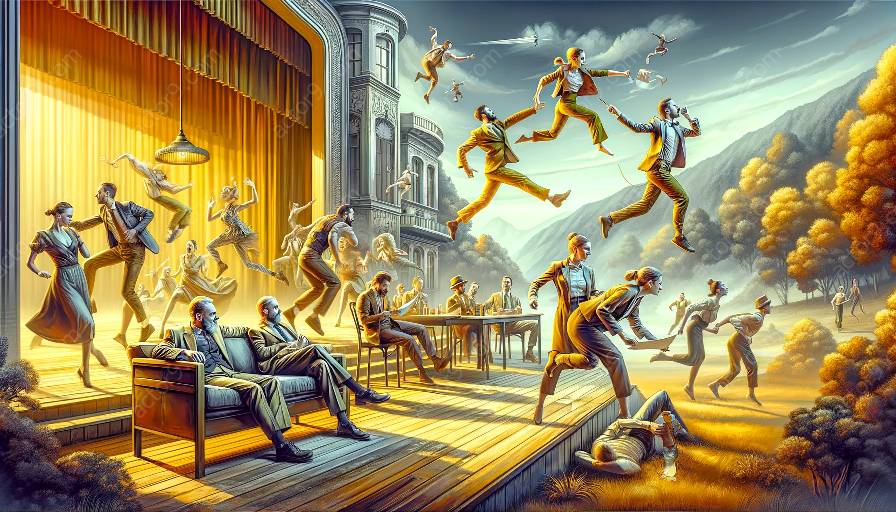Physical comedy is a performance style that uses exaggerated movements, gestures, and facial expressions to evoke laughter. It plays a significant role in entertainment, particularly in children's theatre, where it can enhance engagement and educational value. This article will delve into the adaptation of physical comedy techniques, integrating elements of physical theatre, and the impact of infusing humor into educational and children's theatre.
Understanding Physical Comedy and Physical Theatre
Physical comedy, also known as slapstick comedy, involves exaggerated actions and reactions, often involving props and visual gags. It is characterized by its reliance on bodily movements and facial expressions to convey humor and convey a story. On the other hand, physical theatre is a performance style that emphasizes the body's role in creating and communicating a narrative, often using movement, expression, and gesture as primary storytelling elements.
Adapting Physical Comedy Techniques for Educational Theatre
Physical comedy techniques can be effectively adapted for educational theatre to engage and entertain young audiences while conveying important messages and educational content. For example, by incorporating physical comedy into educational plays or performances, educators can capture the attention of children and impart valuable lessons in a memorable and entertaining manner. The use of exaggerated movements and gestures can help reinforce key concepts and foster a deeper understanding of the subject matter.
Integrating Comedic Aspects of Physical Theatre
When adapting physical comedy techniques for children's theatre, it is essential to integrate comedic aspects of physical theatre to create an immersive and entertaining experience. This entails combining elements of physical comedy with the expressive and narrative-driven qualities of physical theatre. Through this integration, performers can effectively engage young audiences and convey complex ideas in a lighthearted, engaging manner that resonates with children.
The Impact of Humor in Children's Theatre
Infusing humor into children's theatre through physical comedy techniques and comedic aspects of physical theatre can have significant benefits for young audiences. Humor not only enhances enjoyment but also fosters active participation, cognitive development, and emotional understanding. By integrating laughter and entertainment into educational theatre, performers can create a captivating and enriching experience for children, fostering a lifelong appreciation for the performing arts.
Methods of Infusing Humor into Educational and Children's Theatre Performances
There are various methods to infuse humor into educational and children's theatre performances using physical comedy techniques. These may include the use of exaggerated gestures, visual gags, comedic timing, and physical improvisation. Additionally, incorporating elements of surprise, repetition, and absurdity can further enhance comedic impact, captivating young audiences and enhancing the overall educational experience.
Conclusion
Adapting physical comedy techniques for educational and children's theatre offers a unique opportunity to engage, entertain, and educate young audiences. By integrating comedic aspects of physical theatre, performers can create captivating and enriching experiences that leave a lasting impact on children, fostering a lifelong love for the performing arts and learning.




































